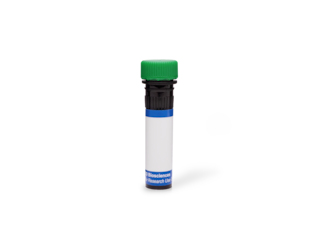-
Reagents
- Flow Cytometry Reagents
-
Western Blotting and Molecular Reagents
- Immunoassay Reagents
-
Single-Cell Multiomics Reagents
- BD® OMICS-Guard Sample Preservation Buffer
- BD® AbSeq Assay
- BD® Single-Cell Multiplexing Kit
- BD Rhapsody™ ATAC-Seq Assays
- BD Rhapsody™ Whole Transcriptome Analysis (WTA) Amplification Kit
- BD Rhapsody™ TCR/BCR Next Multiomic Assays
- BD Rhapsody™ Targeted mRNA Kits
- BD Rhapsody™ Accessory Kits
- BD® OMICS-One Protein Panels
-
Functional Assays
-
Microscopy and Imaging Reagents
-
Cell Preparation and Separation Reagents
-
- BD® OMICS-Guard Sample Preservation Buffer
- BD® AbSeq Assay
- BD® Single-Cell Multiplexing Kit
- BD Rhapsody™ ATAC-Seq Assays
- BD Rhapsody™ Whole Transcriptome Analysis (WTA) Amplification Kit
- BD Rhapsody™ TCR/BCR Next Multiomic Assays
- BD Rhapsody™ Targeted mRNA Kits
- BD Rhapsody™ Accessory Kits
- BD® OMICS-One Protein Panels
- Italy (English)
-
Change country/language
Old Browser
This page has been recently translated and is available in French now.
Looks like you're visiting us from United States.
Would you like to stay on the current country site or be switched to your country?
BD Pharmingen™ FITC Mouse Anti-Pig Monocyte/Granulocyte
Clone 74-22-15A (RUO)

Flow cytometric analysis of anti-Pig Monocyte/Granulocyte staining on pig peripheral blood granulocytes. Pig whole blood was stained with FITC Mouse Anti-Pig Monocyte/Granulocyte (Cat. No. 561498; solid line histogram) or with a FITC Mouse IgG2b, κ Isotype Control (Cat. No. 559532; dashed line histogram). The erythrocytes were lysed with BD PharmLyse™ Lysing Buffer (Cat. No. 555899). The fluorescence histograms were derived from gated events with the forward and side light-scatter characteristics of viable granulocytes. Flow cytometry was performed using a BD LSR™ II Flow Cytometry System.


Flow cytometric analysis of anti-Pig Monocyte/Granulocyte staining on pig peripheral blood granulocytes. Pig whole blood was stained with FITC Mouse Anti-Pig Monocyte/Granulocyte (Cat. No. 561498; solid line histogram) or with a FITC Mouse IgG2b, κ Isotype Control (Cat. No. 559532; dashed line histogram). The erythrocytes were lysed with BD PharmLyse™ Lysing Buffer (Cat. No. 555899). The fluorescence histograms were derived from gated events with the forward and side light-scatter characteristics of viable granulocytes. Flow cytometry was performed using a BD LSR™ II Flow Cytometry System.

Flow cytometric analysis of anti-Pig Monocyte/Granulocyte staining on pig peripheral blood granulocytes. Pig whole blood was stained with FITC Mouse Anti-Pig Monocyte/Granulocyte (Cat. No. 561498; solid line histogram) or with a FITC Mouse IgG2b, κ Isotype Control (Cat. No. 559532; dashed line histogram). The erythrocytes were lysed with BD PharmLyse™ Lysing Buffer (Cat. No. 555899). The fluorescence histograms were derived from gated events with the forward and side light-scatter characteristics of viable granulocytes. Flow cytometry was performed using a BD LSR™ II Flow Cytometry System.



Regulatory Status Legend
Any use of products other than the permitted use without the express written authorization of Becton, Dickinson and Company is strictly prohibited.
Preparation And Storage
Product Notices
- Since applications vary, each investigator should titrate the reagent to obtain optimal results.
- An isotype control should be used at the same concentration as the antibody of interest.
- Caution: Sodium azide yields highly toxic hydrazoic acid under acidic conditions. Dilute azide compounds in running water before discarding to avoid accumulation of potentially explosive deposits in plumbing.
- For fluorochrome spectra and suitable instrument settings, please refer to our Multicolor Flow Cytometry web page at www.bdbiosciences.com/colors.
- Please refer to www.bdbiosciences.com/us/s/resources for technical protocols.
Data Sheets
Companion Products



The 74-22-15A (switch variant of 74-22-15) monoclonal antibody, an isotype class-switch variant of mAb 74-22-15, specifically binds to a 230-kDa protein expressed by most pig macrophages, peripheral blood monocytes and granulocytes, and few lymphocytes. mAb 74-22-15A does not crossreact with human or bovine cells. This clone was clustered as anti-SWC3a at the First International Swine CD workshop.

Development References (8)
-
Binns RM, Whyte A, Licence ST. The role of E-selectin in lymphocyte and polymorphonuclear cell recruitment into cutaneous delayed hypersensitivity reactions in sensitized pigs. J Immunol. 1996; 157(9):4094-4099. (Clone-specific: Immunohistochemistry). View Reference
-
Blecha F, Kielian T, McVey DS. Workshop studies on monoclonal antibodies reactive against porcine myeloid cells. Vet Immunol Immunopathol. 1994; 43(1-3):269-272. (Biology). View Reference
-
Haverson K, Bailey M, Higgins VR, Bland PW, Stokes CR. Characterization of monoclonal antibodies specific for monocytes, macrophages and granulocytes from porcine peripheral blood and mucosal tissues. J Immunol Methods. 1994; 170(2):233-245. (Biology). View Reference
-
McCullough KC, Schaffner R, Natale V, Kim YB, Summerfield A. Phenotype of porcine monocytic cells: modulation of surface molecule expression upon monocyte differentiation into macrophages. Vet Immunol Immunopathol. 1997; 58(3-4):265-275. (Biology). View Reference
-
Pescovitz MD, Lunney JK, Sachs DH. Preparation and characterization of monoclonal antibodies reactive with porcine PBL. J Immunol. 1984; 133(1):368-375. (Immunogen). View Reference
-
Summerfield A, Haverson K, Thacker E, McCullough KC. Differentiation of porcine myeloid bone marrow haematopoietic cell populations. Vet Immunol Immunopathol. 2001; 80(1-2):121-129. (Biology). View Reference
-
Sundt TM, Arn JS, Sachs DH. Patterns of T cell-accessory cell interaction in the generation of primary alloresponses in the pig. Transplantation. 1992; 54(5):911-916. (Clone-specific: Depletion). View Reference
-
Yang H, Parkhouse RM. Phenotypic classification of porcine lymphocyte subpopulations in blood and lymphoid tissues. Immunology. 1996; 89(1):76-83. (Biology). View Reference
Please refer to Support Documents for Quality Certificates
Global - Refer to manufacturer's instructions for use and related User Manuals and Technical data sheets before using this products as described
Comparisons, where applicable, are made against older BD Technology, manual methods or are general performance claims. Comparisons are not made against non-BD technologies, unless otherwise noted.
For Research Use Only. Not for use in diagnostic or therapeutic procedures.